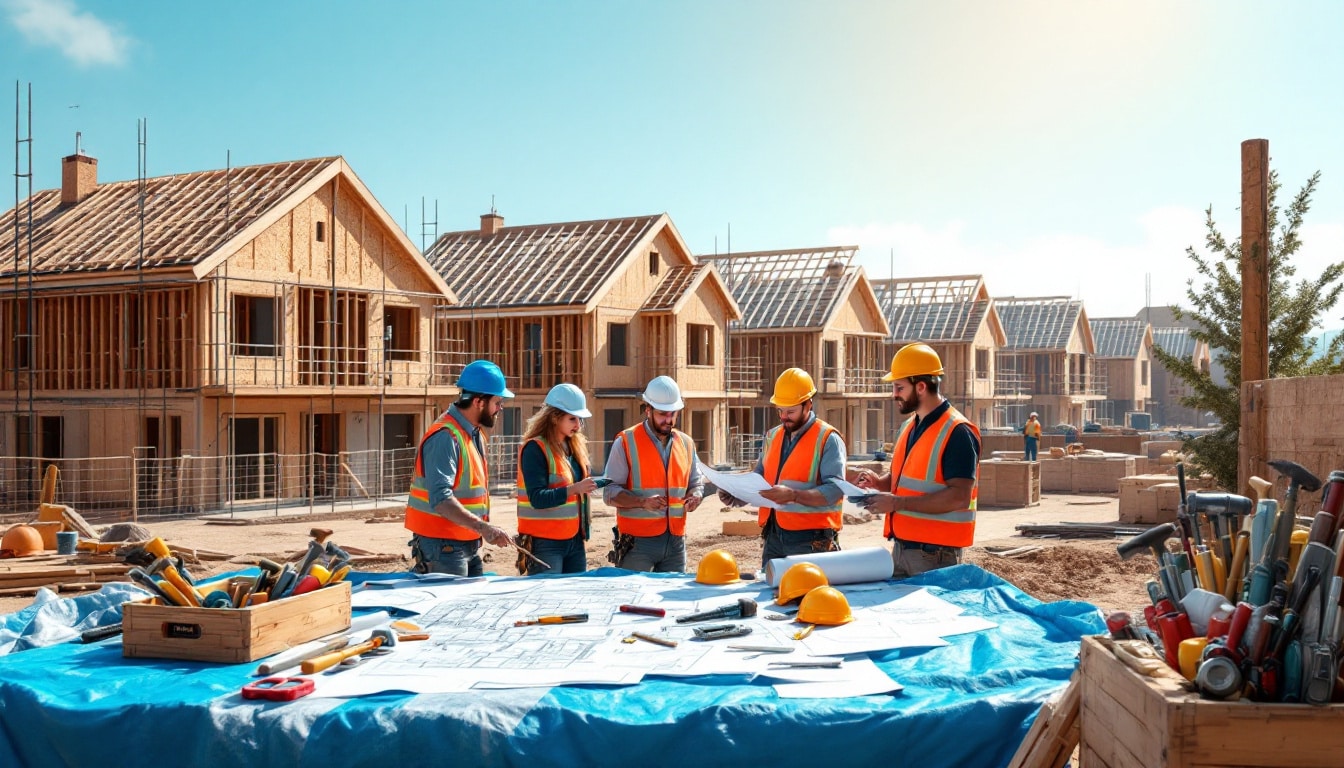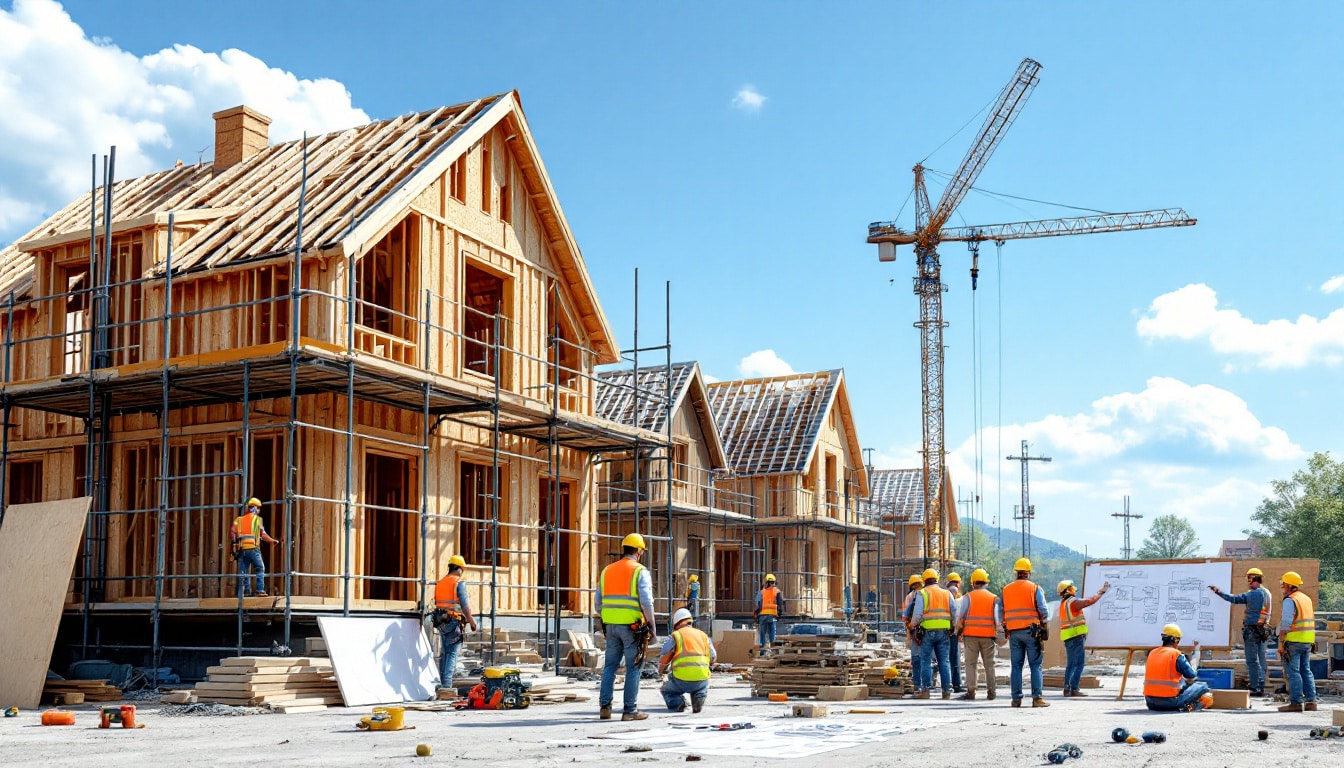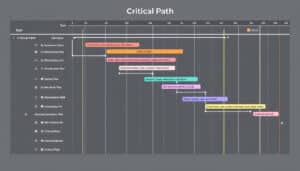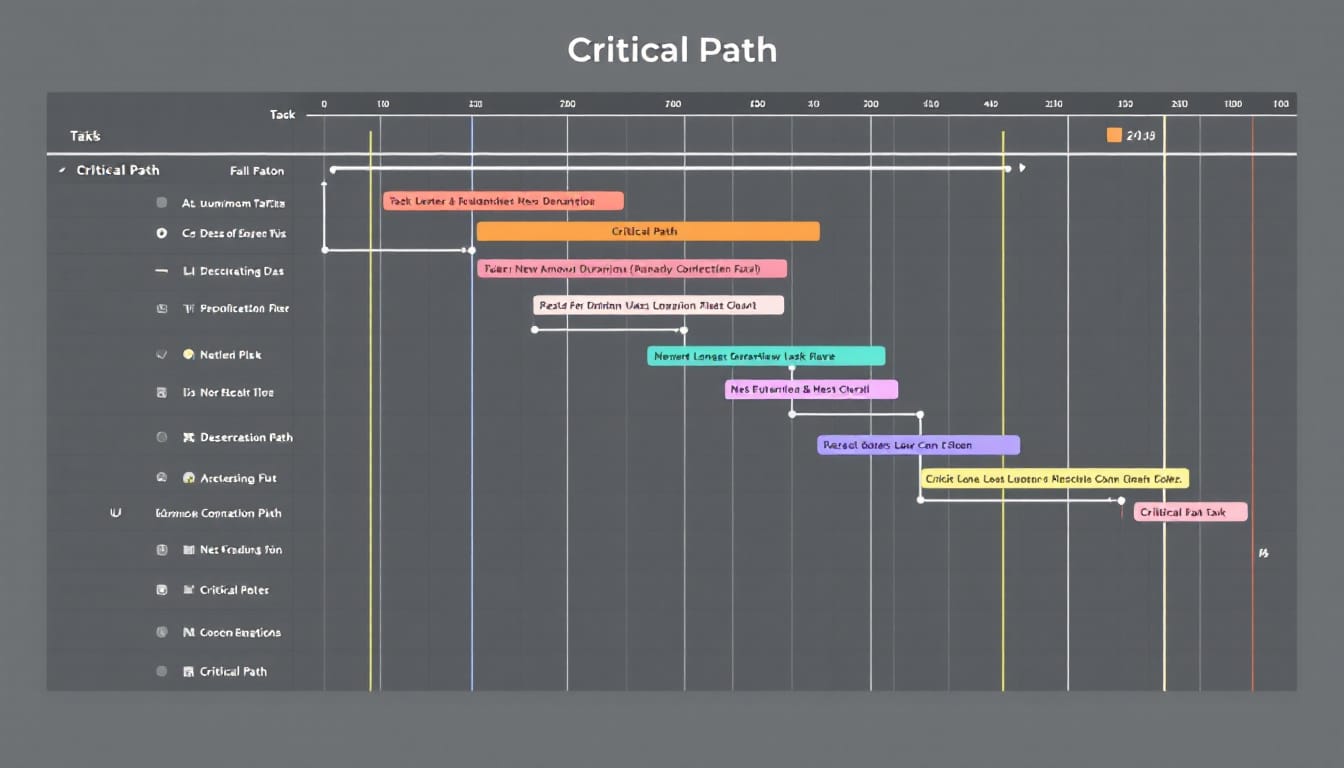“`html
🔥 Nous recommandons Ideamap
Ideamap est l’outil idéal pour un brainstorming ou un projet collaboratif. Grâce son interface facile et à ses fonctions IA, Ideamap booste votre créativité tout en favorisant une meilleure organisation de vos idées pour atteindre vos objectifs.
*Diving into residential construction reveals a complex and fascinating universe.* *Every project requires meticulous orchestration and a clear vision.* *Only the best tools can ensure the success of these ambitious endeavors.*
With effective project management, every step, from site preparation to interior finishing, can be perfectly coordinated. The software ProjectManager offers powerful features for planning, tracking, and optimizing your projects in real-time. Whether you’re building a single-family home or a multi-family building, having the right tools makes all the difference. Together, let’s turn your ideas into tangible and sustainable achievements.

What is residential construction?
Residential construction encompasses the creation, modification, or repair of single-family and multi-family housing. This sector is essential as it meets the fundamental needs for housing, providing living spaces suitable for families and individuals. The complexity of residential construction lies in its numerous phases and the involvement of various stakeholders, each bringing their expertise to ensure the project’s success.
Residential construction generally unfolds in several key stages, ranging from site preparation to the finishing touches on interior spaces. Each phase requires careful planning and effective coordination among various participants, such as architects, contractors, engineers, and material suppliers.
A fundamental aspect of residential construction is the diversity of available architectural styles. Whether it’s traditional, modern, or eco-friendly homes, each project must adapt to the preferences of future occupants while complying with local building regulations.
Moreover, project management plays a crucial role in residential construction. Using appropriate software like ProjectManager allows you to plan, track, and control each stage of the project in real-time, ensuring adherence to deadlines and the allocated budget.
What are the key stages of residential construction?
Residential construction occurs in several distinct phases, each playing a decisive role in the overall success of the project. Here are the main steps:
Site preparation and foundations
The first step is site preparation, which includes clearing the land, excavation, and pouring the foundations. These foundations must be solid and well-designed to ensure the future structure’s stability. Poor preparation can lead to significant structural problems in the long run.
Building the structure
After the foundations, the construction of the base structure begins. This includes raising load-bearing walls, installing floors, and setting up the framework. This step determines the shape and strength of the house.
Installing systems
Once the structure is in place, it’s time to install essential systems such as plumbing, electricity, and the Heating, Ventilation, and Air Conditioning (HVAC) System. These infrastructures must be installed accurately to ensure comfort and functionality in the housing.
Interior and exterior finishes
The final step involves installing walls, plaster, and interior finishes. Next, the interior carpentry work is done, followed by the landscaping of entrances and pathways. Exterior finishes, such as cladding and landscaping, complete the project.
Each stage requires rigorous management to ensure that the project progresses according to the planned timeline and budget. Using project management software like ProjectManager facilitates this coordination by providing effective planning and tracking tools.
What types of residential construction projects exist?
Residential construction is mainly divided into two categories: single-family housing and multi-family buildings. Each has specific characteristics and requirements.
Single-family homes
Single-family homes are independent residences, each occupying its own plot of land. This type of construction generally offers greater privacy and allows for increased customization of spaces. Architectural styles vary widely, ranging from traditional homes to modern constructions, each with its own maintenance and cost requirements.
Multi-family buildings
Multi-family buildings, such as condominiums and townhouses, house several residential units within a single structure. These projects are common in densely populated urban areas, offering benefits such as shared costs for common facilities and better space utilization. Managing these projects requires meticulous coordination to meet the needs of each resident while maintaining the cohesion of the entire building.
For those looking to explore further, these illustrative examples of construction project categories can provide an enriching perspective on the diversity of residential projects.
What are the essential factors for the success of a residential construction project?
The success of a residential construction project relies on several key factors. Each aspect must be carefully planned and executed to ensure that the project proceeds smoothly and results in a high-quality home.
Project location
Location is one of the most critical elements in residential construction. It influences not only the property value but also the quality of life for future residents. Factors such as accessibility, proximity to amenities, and environmental conditions must be considered when choosing the site.
Architectural design process
The architectural design process determines the functionality and aesthetics of the home. Collaborating with skilled architects and builders is essential to translate the homeowners’ vision into concrete and feasible plans. A well-thought-out design also facilitates the later stages of construction.
Contractor management
Effective contractor management is essential to coordinate the various teams and subcontractors involved in the project. This includes selecting qualified professionals, supervising work, and ensuring that each stage meets quality standards and deadlines.
Zoning and building permits
Compliance with zoning regulations and obtaining necessary building permits are non-negotiable legal requirements. Ignoring these aspects can lead to severe penalties and costly delays. Therefore, it’s vital to understand local requirements thoroughly before starting any project.
Equipment rental
Proper equipment rental allows for cost reduction and ensures access to modern, well-maintained machinery. This also provides valuable flexibility, enabling resources to be adapted to the specific needs of the project as it progresses.
Scope of work
Clearly defining the scope of work helps prevent misunderstandings and budget overruns. A detailed plan, including all construction obligations and the activities of various participants, serves as a reference throughout the project, ensuring smooth execution.
Acquisitions
The acquisition process involves obtaining all materials and services necessary for construction. This includes supplier selection, contract negotiation, and delivery management. Effective acquisition management ensures that resources are available on time, thereby avoiding construction delays.
Each factor mentioned plays a decisive role in the success of the project. Rigorous planning and proactive management allow for overcoming challenges and achieving set goals.
How to differentiate residential construction from commercial construction?
Although residential construction and commercial construction share many similarities, they also exhibit notable differences. Understanding these distinctions is crucial for adapting management strategies and resources according to the type of project.
The main difference lies in the end product. Residential construction results in homes such as single-family houses or apartments, whereas commercial construction creates spaces for businesses, such as offices, shops, or warehouses.
In terms of regulations, commercial construction is often subject to stricter standards regarding safety, accessibility, and energy performance. The materials used may also vary, with a preference for durable solutions suited for intensive use.
In terms of budgets and costs, commercial construction tends to be higher due to the scope of the projects and specific requirements. Additionally, deadlines may be tighter, necessitating even more precise coordination among different teams.
Despite these differences, the fundamentals of project management remain similar. Using tools like ProjectManager can facilitate coordination, tracking, and resource optimization, whether for a residential or commercial project.
How to use ProjectManager to manage residential construction projects?
Effectively managing a residential construction project requires the use of efficient tools capable of centralizing information and optimizing processes. ProjectManager is an online project management software that offers a multitude of features tailored to the needs of residential construction.
Planning and tracking with Gantt charts
The Gantt charts of ProjectManager allow for visualizing the entire construction schedule, identifying critical tasks, and tracking the project’s progress in real-time. This overall view facilitates the coordination of different phases and ensures adherence to deadlines.
Resource management
Resource management is simplified thanks to the integrated tools of ProjectManager. You can assign tasks, track team availability, and balance workloads to maximize productivity. This helps avoid overloads and ensures optimal use of available resources.
Real-time tracking
With real-time dashboards, ProjectManager offers instant visibility into project progress. Data is automatically updated and presented in easy-to-interpret charts and graphs, enabling quick, informed decision-making.
Risk and contingency management
Risk management is facilitated by the tools of ProjectManager, helping to anticipate potential issues and plan contingency solutions. This ensures better resilience against unforeseen events, thereby minimizing negative impacts on the project.
By using ProjectManager, residential construction teams can not only improve their efficiency but also ensure better quality of delivery. This software adapts to the specific needs of each project, offering the essential flexibility within the construction field.
Related content on managing residential construction projects
Managing residential construction projects is a complex field that requires a deep understanding of the various aspects involved. To help management teams master this process, there is a multitude of resources and practical guides available.
Among these resources, specialized blogs address essential topics such as creating a construction budget or the different types of construction contracts. These articles provide valuable advice and concrete examples for navigating the daily challenges of project management.
Additionally, guides on the principles of industrial construction management offer complementary perspectives, helping managers apply effective strategies and optimize their processes.
By combining these resources with powerful tools like ProjectManager, residential construction professionals can not only enhance their project management but also increase client satisfaction and the profitability of their projects.














